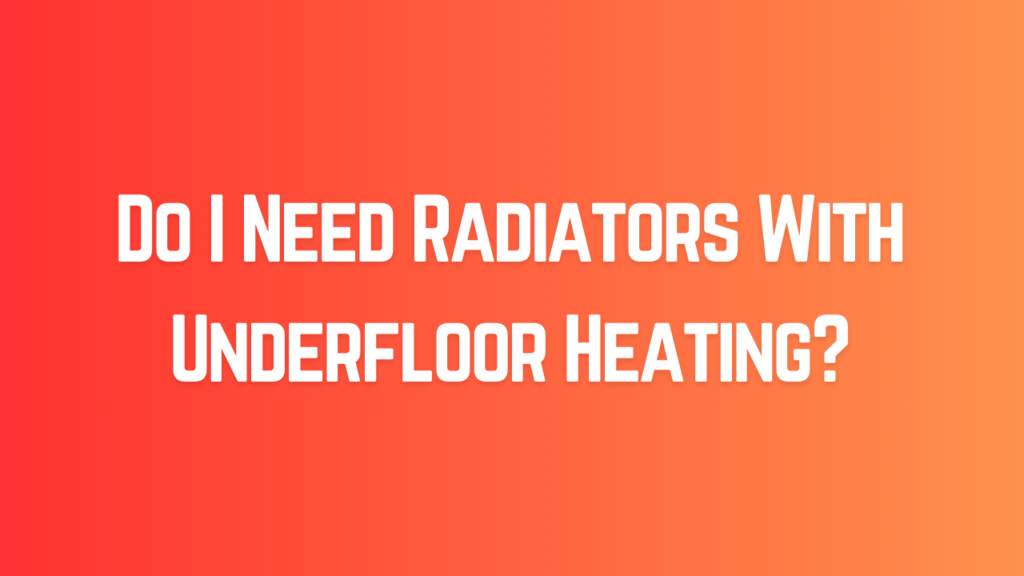
Do I need radiators with underfloor heating? Wondering if you should combine radiators with underfloor heating? Learn about the benefits, installation process, and maintenance of this heating system combination for your Fife area home.
Radiators and underfloor heating are both effective methods of keeping your home warm during the cold Fife winters. However, you might wonder if it’s necessary to have radiators when you already have underfloor heating. In this article, we will explore whether radiators are needed alongside underfloor heating, the advantages of this combination, the installation process, maintenance, and your responsibilities as a homeowner in the Fife Council area.
Do You Need Radiators with Underfloor Heating?
In most cases, you do not need traditional radiators when you have underfloor heating. Underfloor heating is designed to provide consistent and efficient warmth throughout your home, eliminating the need for radiators. However, there are some considerations to keep in mind:
Underfloor heating is designed to provide consistent and efficient warmth throughout your home. In most cases, it can be a standalone heating solution. Radiators are not essential when you have underfloor heating, but they can complement the system in specific situations.
Benefits of Combining Radiators with Underfloor Heating:
Versatility: Radiators can provide extra heat in areas where underfloor heating might be less effective, such as in bathrooms with tiled floors.
Rapid Warm-up: Radiators heat up quickly, which can be beneficial during exceptionally cold days when you need to warm up a room fast.
Zoning: Combining both systems allows you to create heating zones, giving you more control over different areas of your home.
Backup Heating: In case of underfloor heating system maintenance or repair, radiators can serve as a backup heating source, ensuring your home remains comfortable.
Installation Process
Installing radiators alongside underfloor heating requires careful planning and expertise. Here are the key steps:
Step 1: Assessment A professional heating technician will assess your home’s layout, insulation, and heating needs to determine the ideal placement of radiators.
Step 2: Radiator Sizing The technician will select radiators of appropriate size to complement the underfloor heating system. Radiator size and placement must be balanced to ensure even heating.
Step 3: Plumbing Connection Radiators will be connected to your central heating system’s plumbing. This may involve adjustments to your existing heating setup.
Step 4: Thermostat Integration Integrating radiators with your underfloor heating system’s thermostat allows for precise control and zoning.
Maintenance
To keep your combined underfloor heating and radiator system in top condition, follow these maintenance guidelines:
Regular Inspections: Periodically check for any leaks, unusual noises, or fluctuations in heating performance.
Bleeding Radiators: If your radiators are not heating evenly, bleeding them can release trapped air and improve their efficiency.
Professional Servicing: Schedule annual maintenance by a qualified technician to ensure both systems operate optimally.
Your Responsibilities
As a homeowner in the Fife council area, it’s essential to:
Monitor your heating system’s performance and address issues promptly.
Keep your heating system well-maintained to maximize its lifespan and efficiency.
Consider the energy efficiency of your combined heating system to reduce environmental impact.
In conclusion, while radiators are not a strict necessity when you have underfloor heating, combining the two can offer versatility and rapid heating benefits. The decision ultimately depends on your specific heating needs and preferences. If you’re considering this combination for your Fife area home, contact Fife Trades for expert advice and installation services. Please get in touch with us for a quote today. Send us a message at fifetrades@gmail.com, and explore our range of services at Fife Trades Services.
